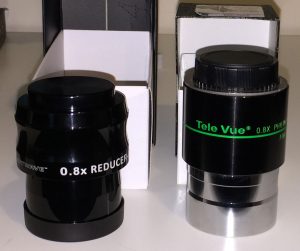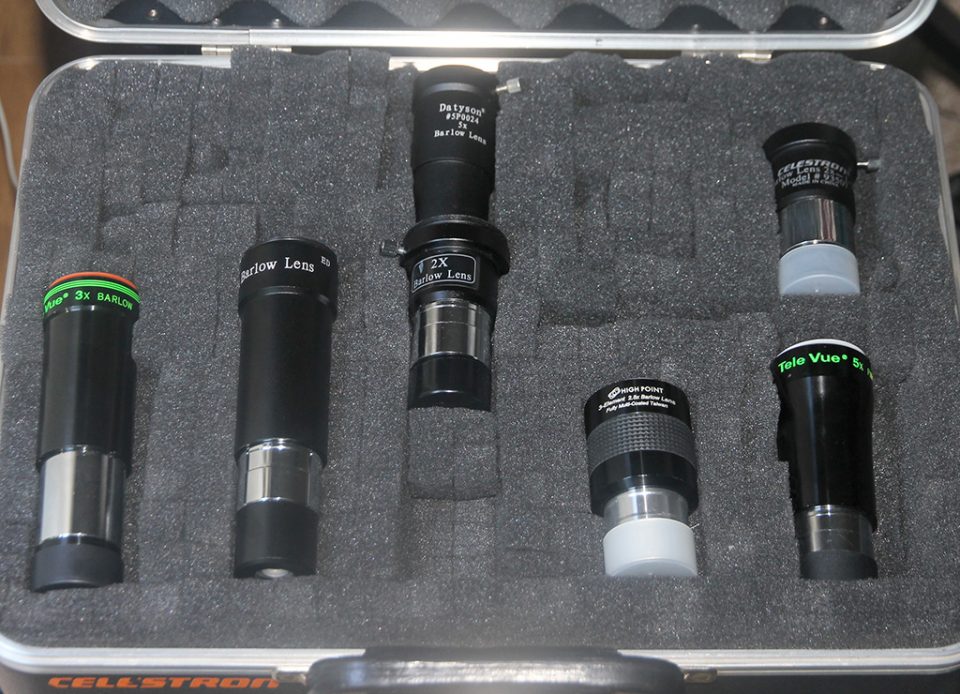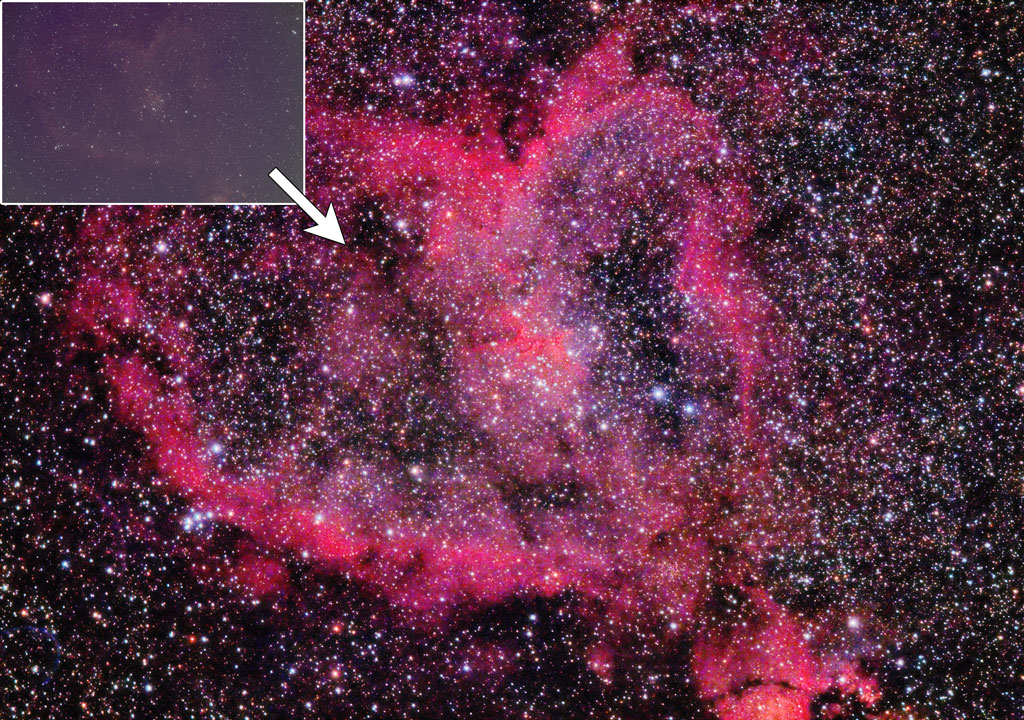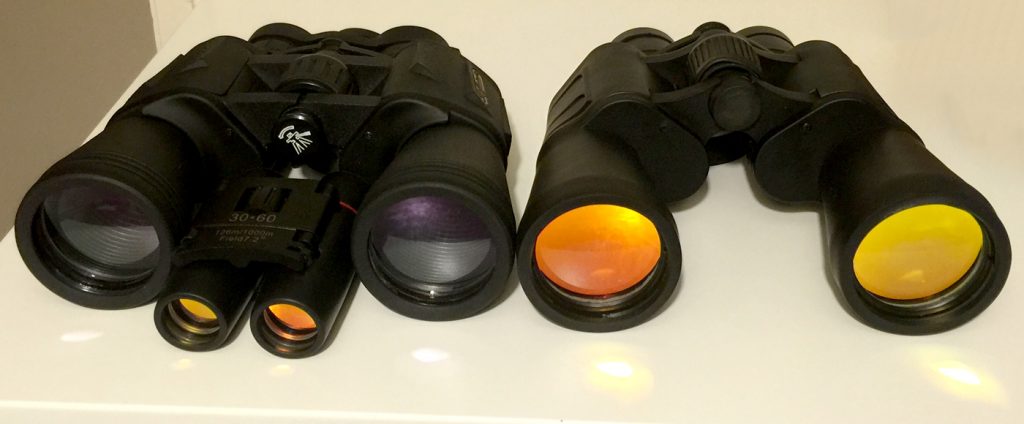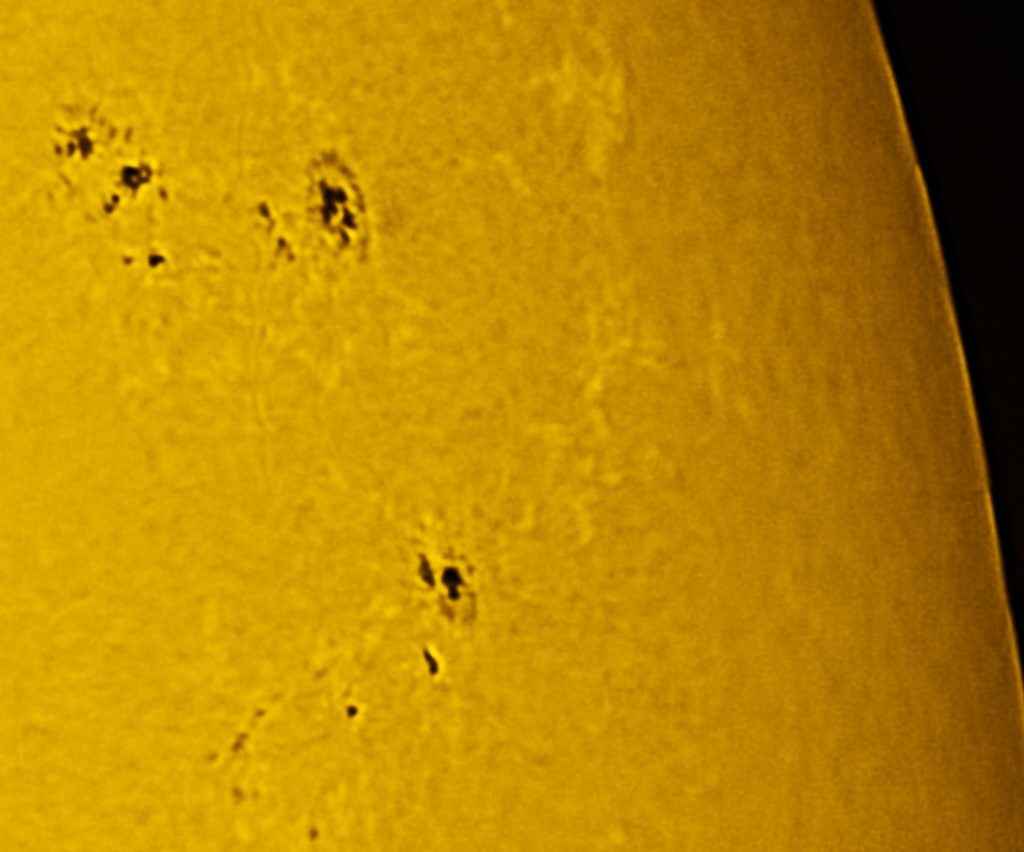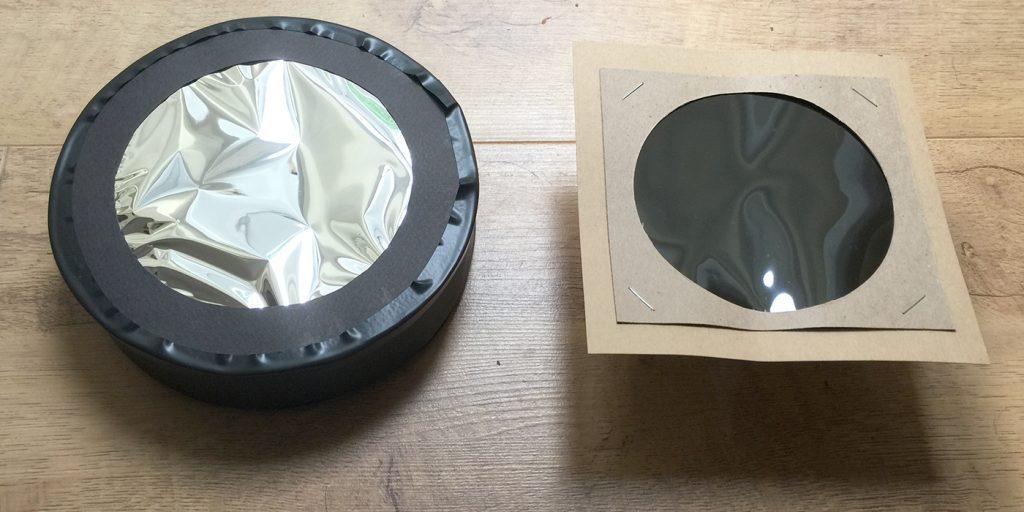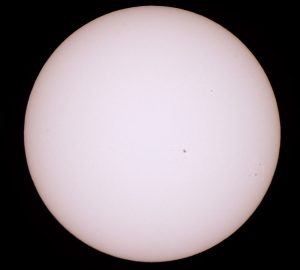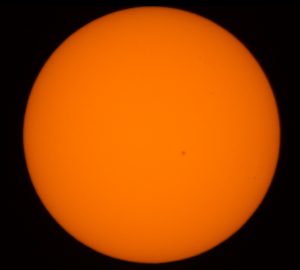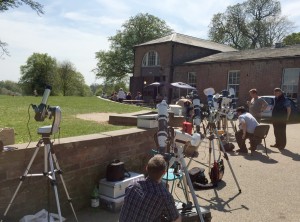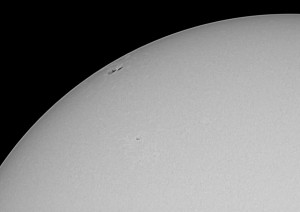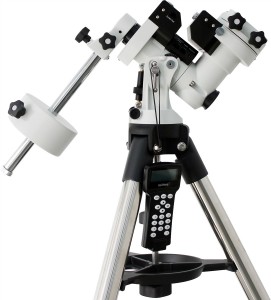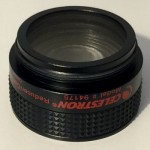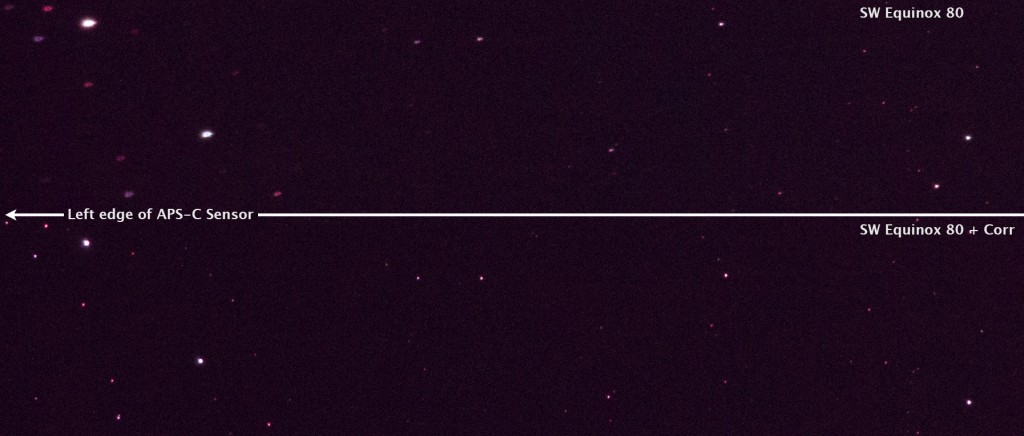A popular guiding solution is the 50mm guide scope, often by converting an existing 9×50 finder scope. It has the advantage that it is light, it can fit on your existing finder shoe, it is very fast giving you many stars at low exposures and it can be quite effective at short and medium focal lengths. After getting a bit frustrated with a couple of OAGs (off-axis guiders), I looked into adapters for converting the classing 9×50 finder, however they were very expensive for what they are, and, as I found out, for a little more you can get a dedicated guide-scope that should be better suited to the task. I got two units sold by “Solomark”. Well, I got one unit actually, it was very competitively priced, came quickly, but it was the wrong one! It was obviously an honest mistake as I received a more expensive unit, but I had not read good things about guiding with helical focusers, hence I wrote them and they immediately sent me the one I ordered and told me to keep the more expensive one, so that was some great service from Solomark. But, you will also find these guide-scopes sold under various names, sometimes with minor differences and for varying prices. Let’s have a look at them:
Solomark 50mm Mini Guide Scope
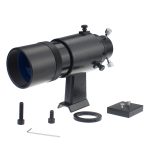 If it seems familiar, that’s because it is identical to the Orion 50mm mini guider (including all the accessories that come with the Orion). In fact, my unit came marked as “Starguider”, which is how Agena brands their own version, and there is also a TS (Teleskop-Service) version. The optics look good and construction is metal except the 3 adjustment screws, but relatively light at 496g including the stand which fits snuggly on the usual skywatcher/celestron etc finder-scope shoe (a shoe is also included if don’t have one).
If it seems familiar, that’s because it is identical to the Orion 50mm mini guider (including all the accessories that come with the Orion). In fact, my unit came marked as “Starguider”, which is how Agena brands their own version, and there is also a TS (Teleskop-Service) version. The optics look good and construction is metal except the 3 adjustment screws, but relatively light at 496g including the stand which fits snuggly on the usual skywatcher/celestron etc finder-scope shoe (a shoe is also included if don’t have one).
Focusing is a bit awkward: you focus roughly by manually sliding your camera into the tube as much as required and tightening (you can attach the provided parfocal ring to not have to repeat this) and then you can adjust a bit by rotating the front part which can move the objective by a few mm. Due to this limited focus travel, to focus with an eyepiece (i.e. to use this as a regular finderscope) you need a small extension. I also tried a 1.25″ diagonal, but that added too much distance so I could not get focus with an eyepiece, so you are quite limited if you expected to swap the camera with an eyepiece now and then.
I don’t see a way to remove the guide scope from the holding bracket (in case you wanted to upgrade the bracket or the scope) and the 3 adjustment screws provide very little travel, although I doubt you’d have a problem finding a guide star with a decent guide camera.
The specs claim 162mm f/3.2, however plate-solving with a QHY5L-IIm camera gave me 183mm. This is actually a bit more useful, as at f/3.66 it is still really fast, but the extra focal length is welcome.
Where to buy: Right now I see the Solomark out of stock, but you can get the Orion version at a decent price from Amazon.com or Amazon.co.uk. There is also the StarGuider version on ebay.com.
Solomark F50 Guidescope
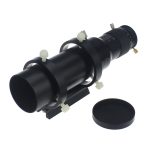
Right from the start, I liked the smooth, graded helical focuser that makes focusing very easy, a big advantage over models without one. In fact, apart from the helical focusing travel, the focuser has a telescoping drawtube (also graded) which allows you to reach focus easily even with an eyepiece – no need for an extension. Some people claim helical focusers can add flexure, so we’ll have to see about that. The optics look good (real 50mmm unobstructed aperture) and the build is solid, even the front cap is metal (no focuser cap though, strangely), except the nylon screws – although it seems quite sturdy I have heard some cases where nylon screws added flexure, so that’s an additional concern. The total weight of base & optical assembly is 590g.
Now there is a small issue with the dovetail. While you’d expect it to be the same size as the usual finderscope base, it is, in fact, a few mm thinner. This has the effect that some bases with relatively short screws (e.g. the standard finder shoe on the SkyWatcher Evostar 80ED) can’t reach it to secure it. A longer screw fixes the problem (and some shoes, like the one on my SkyWatcher 130PDS, don’t have an issue to begin with).
The specs claim “190mm f/3.4” (which does not exactly compute with a 50mm aperture), and plate-solving with a QHY5L-IIm camera gave me a close enough value of 182mm focal length, which makes it a very fast f3.64. There is also an “F60” model, which is the 60mm version.
Where to buy: You can get the F50 on Amazon.com or Amazon.co.uk. You can get cheaper unbranded versions from China on Ebay, although I can’t vouch for any specific seller. You might be tempted to also look at the larger F60 at Amazon.com or Amazon.co.uk, although I haven’t tried it myself.
(more →)


